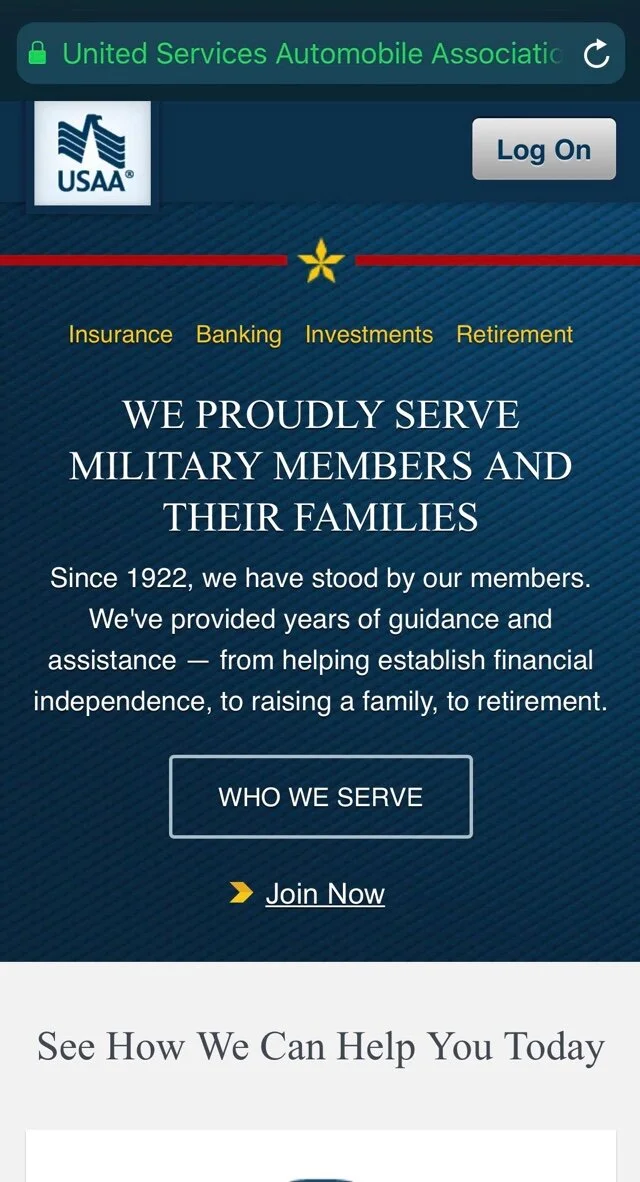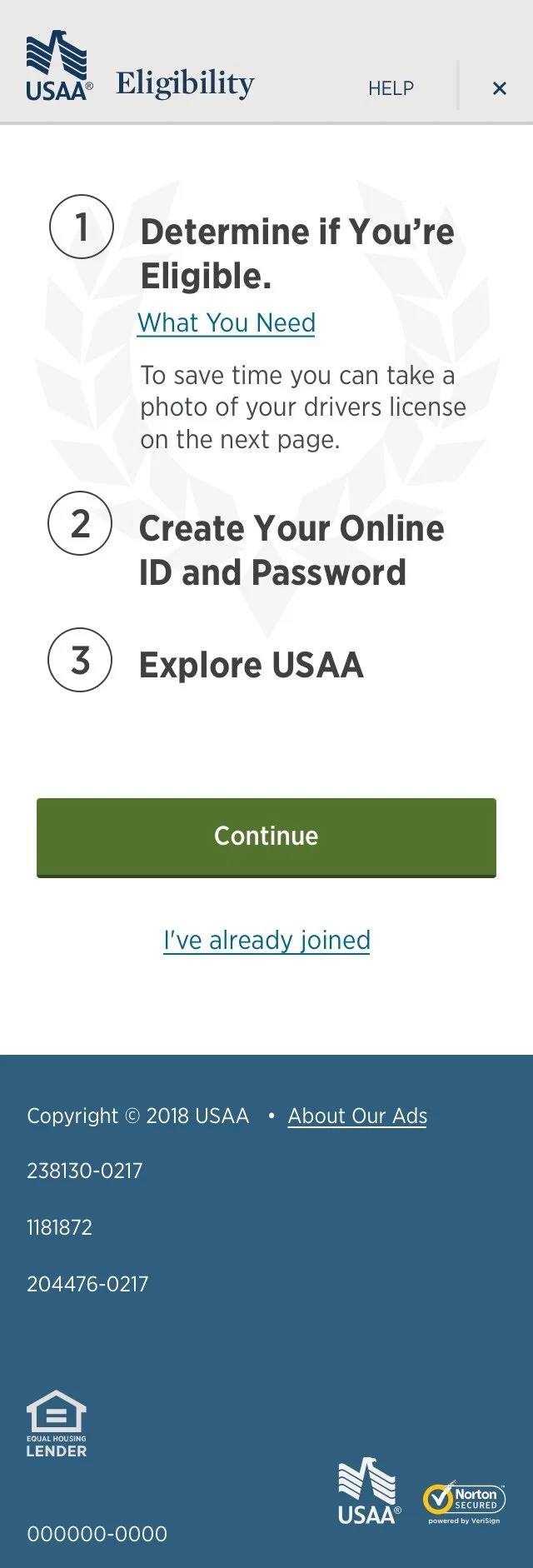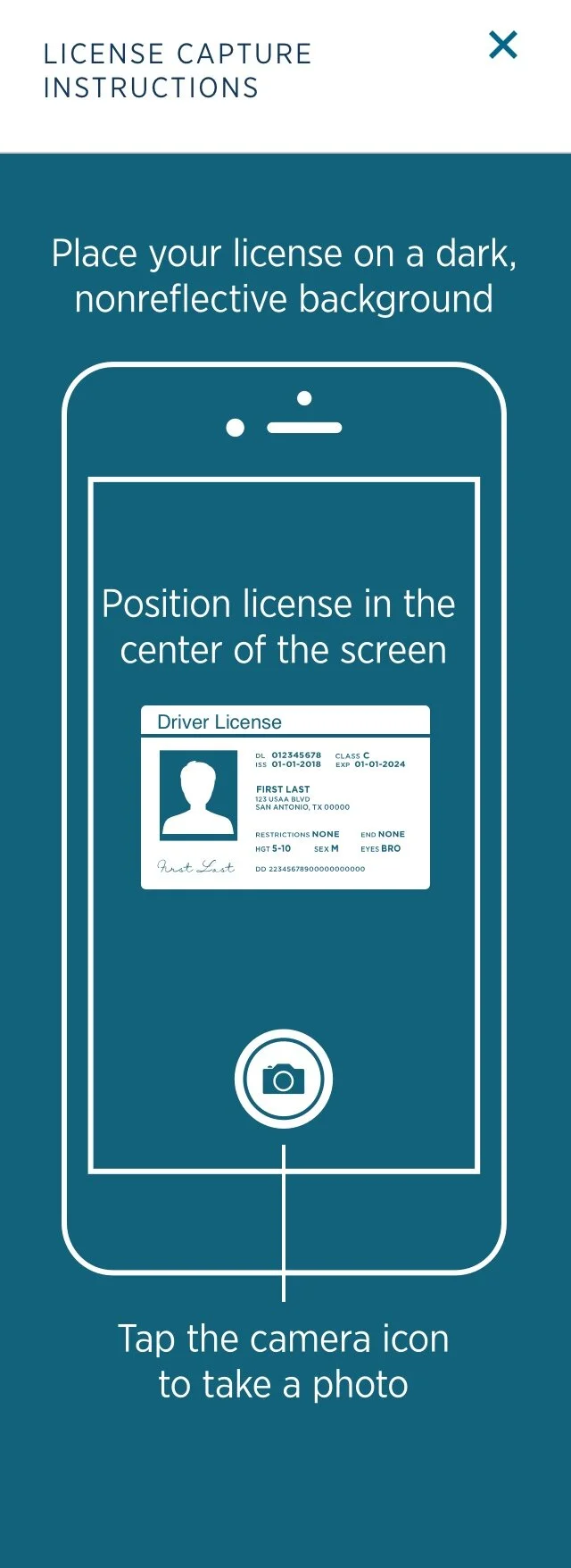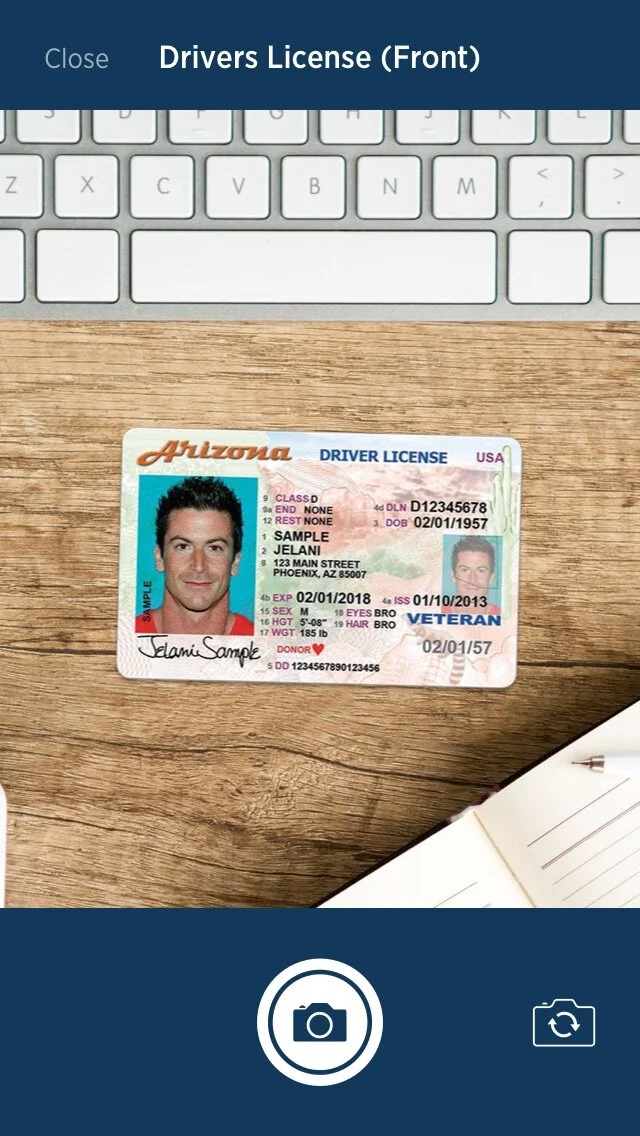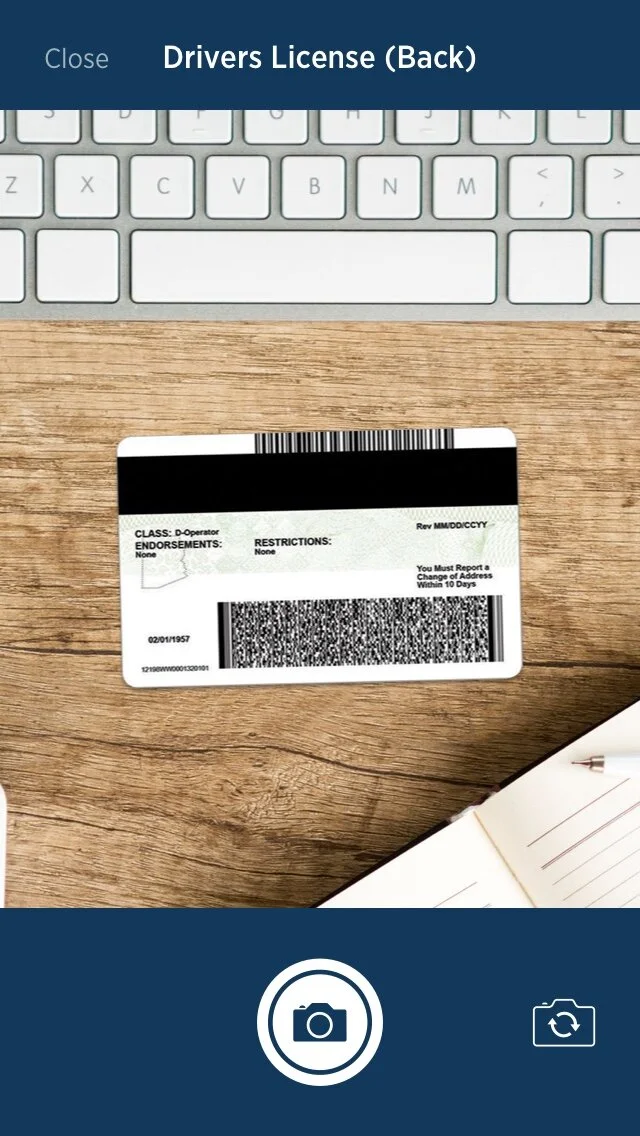Streamlining the Eligibility Form
Join Now
Background | Our “Why”
Recognizing the pivotal role of the eligibility form in converting potential customers, we needed to address the issue of its length and off-putting nature. The goal was to streamline the process and reduce the drop-out rate in the eligibility flow.
The existing experience was time-consuming and placed a heavy burden on users, requiring extensive personal information entry. This resulted in a poor member experience, with only a 27% completion rate for future prospects. We identified an opportunity to enhance the process by pre-filling data using a driver’s license, aiming to boost the number of new members completing the process. The overarching goal was to integrate multiple data sources to verify user data enhance identity validation.
Impact & Outcomes
In the development phase, we conducted a three-month pilot involving 3,867 users, demonstrating a notable impact on user adoption and efficiency. The introduction of the new experience, with the legacy flow as an option, revealed a substantial 47% adoption rate. Crucially, the average time to complete eligibility reduced significantly from almost 7 minutes to under five minutes, showcasing a marked improvement in efficiency. Moreover, the revamped experience achieved an impressive 99% user success rate in surpassing the SSN screen, a stark contrast to the 50% success rate observed in the legacy flow. This substantial improvement was attributed to the new experience's requirement of only the last four digits of the social security number.
Audit & Low-Fidelity
The first step involved auditing the existing experience to identify unnecessary form fields that could be eliminated. The hypothesis was that by reducing the number of fields to only those required for eligibility, we could decrease the bounce rate and increase completions. This collaborative effort included design, development, researchers, and the legal team. Subsequently, we sketched out the potential implementation of a driver’s license capture feature. While initially considering a scan, we adapted to build this capability for the mobile web experience. Opting for APIs, we utilized the phone camera to capture and scan ID data. Partnering with vendors, we were able to extract key information such as the user’s address, phone number, military affiliation, and more.
Wireframes were created to further the discussions between our cross-functional team members in order to finalize the experience. We wanted to create comps as quickly as possible in order to move forward and do some user-testing.
High-Fidelity
We developed a comprehensive high-fidelity prototype using InVision and Sketch, collaborating with our usability department to identify user-testing candidates. The primary focus was on evaluating efficiency, effectiveness, and satisfaction. Participants acknowledged a "creep factor" regarding data pre-filling but appreciated the flow's simplicity. Incorporating feedback, we introduced an opt-in option for the pre-fill capability. Two rounds of usability testing, involving 14 participants, informed critical changes.


